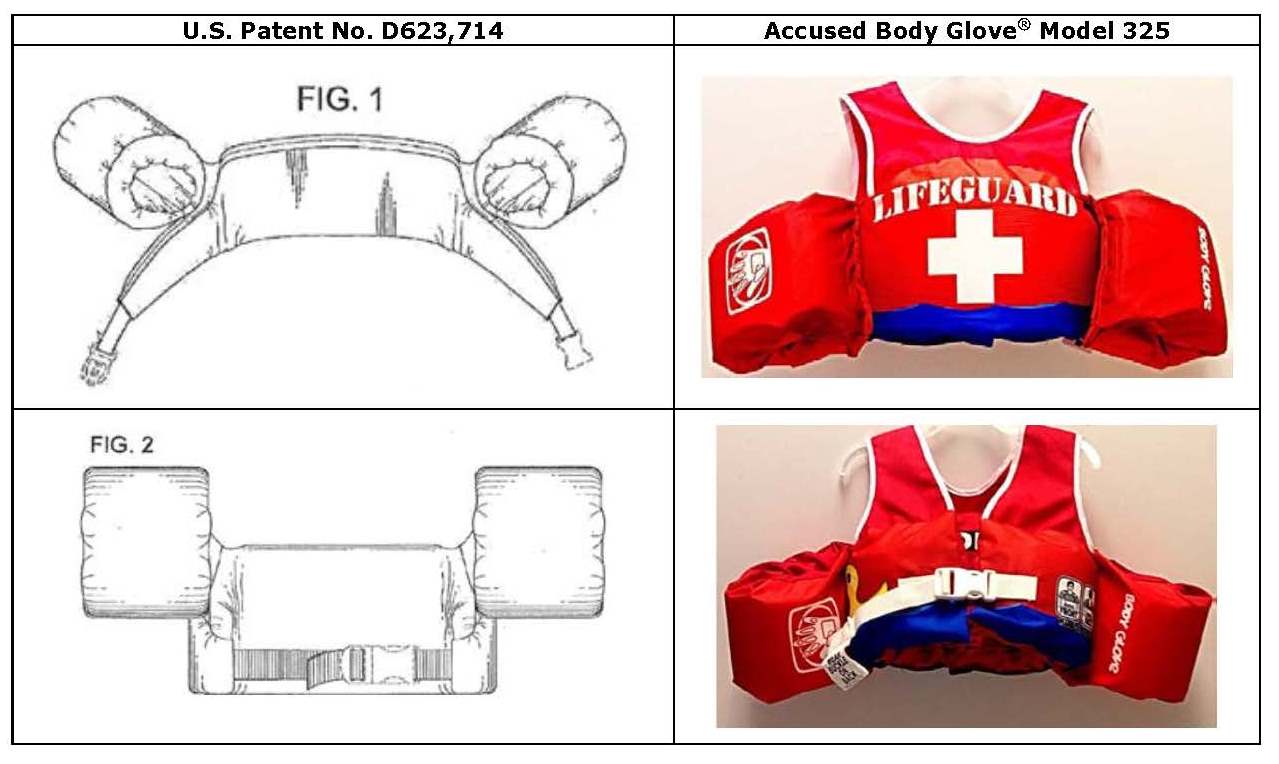
Design Patent Claim Construction Should Include All Elements, Even if Certain Elements Have Functional Purposes
The Federal Circuit opinion of Sport Dimension v. Coleman confirms that as long as the design is not primarily functional, "the design claim is not invalid, even if certain elements have functional purposes." Ethicon Endo-Surgery, 796 F.3d at 1333 (citing Richardson v. Stanley Works, Inc., 597 F.3d 1288, 1293-94 (Fed. Cir. 2010)).
Coleman owns United States Design Patent No. D623,714 (Des. '714 patent). It claims "[t]he ornamental design for a personal flotation device," as shown in Figs. 1 and 2 below. The Des. '714 patent generally discloses a personal flotation device with two arm bands connected to a torso piece. The torso piece is flat on its back and tapers toward a connecting strap on its sides.
Sport Dimension sells watersports related equipment, including its Body Glove® line of personal flotation devices. Sport Dimension's Body Glove® Model 325 is the accused device and is shown below.

Sport Dimension filed a declaratory judgment action in the Central District of California requesting judgment that it did not infringe the Des. '714 patent, and that the patent was invalid. The district court adopted Sport Dimension’s proposed claim construction as "the ornamental design for a personal flotation device, as shown and described in Figures 1-8, except the left and right armband, and the side torso tapering, which are functional and not ornamental."
The Federal Circuit discussion commended claim constructions where the court helped the fact finder "distinguish [ ] between those features of the claimed design that are ornamental and those that are purely functional." (citing OddzOn Prods., Inc. v. Just Toys, Inc., 122 F.3d 1396, 1405 (Fed. Cir. 1997)). But also reiterated that, of course, a design patent cannot claim a purely functional design - a design patent is invalid if its overall appearance is "dictated by" its function. So, a design may contain both functional and ornamental elements, even though the scope of a design patent claim "must be limited to the ornamental aspects of the design." Ethicon Endo-Surgery, 796 F.3d at 1333.
The Federal Circuit concluded that in OddzOn, Richardson and Ethicon, the design patent claims were constructed so as to assist a finder of fact in distinguishing between functional and ornamental features, but in no case did the Court entirely eliminate a structural element from the claimed ornamental design, even though that element also served a functional purpose. Hence, the district court’s construction in this case conflicted with the principles of design patent claim construction because it eliminated whole aspects of the claimed design, i.e., the district court improperly excluded the left and right armband and the torso side tapering. By eliminating structural elements from the claim, the district court improperly converted the claim scope of the design patent from one that covers the overall ornamentation to one that covers individual elements. Thus, the district court erred by completely removing the armbands and side torso tapering from its construction, and the judgment on non infringement from the district court was vacated.


